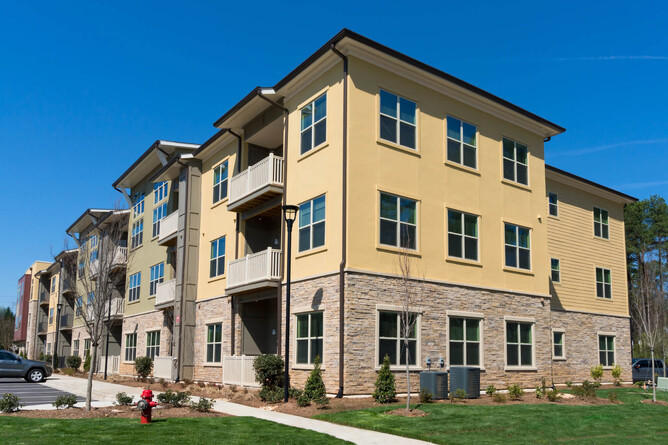The multifamily housing market in New York City is a dynamic and ever-evolving sector, particularly in 2024. As the city recovers from the disruptions of the past few years, new trends are emerging that are redefining this essential segment of the real estate market.
In this blog post, we will explore seven significant trends in multifamily housing in NYC that are shaping the current and future landscape of urban living. From innovative building designs to shifts in investment strategies, these trends offer valuable insights for investors, developers, and residents alike.
Resurgence of Free-Market Rentals
Due to the COVID-19 pandemic, free-market rentals in New York City have shown remarkable resilience. Unlike rent-stabilized units, which are subject to strict regulations and limited rent increases, free-market rentals have benefited from a more flexible pricing model.
This flexibility has allowed landlords to adjust rents to market demand, leading to significant rent growth in key areas such as Manhattan, Brooklyn, and Queens.
Free-market rentals are beautiful in neighborhoods with a blend of lifestyle amenities, proximity to employment hubs, and robust transportation options. These factors have contributed to a surge in demand for rental units that provide convenience and quality of life.
Despite the broader economic uncertainties, the multifamily housing sector in NYC has seen a steady increase in rental prices, reflecting a strong and ongoing demand for high-quality housing options.
Shift Towards Sustainable and Energy-Efficient Buildings
Sustainability has become a cornerstone of new building construction services in NYC, with a growing emphasis on energy efficiency and environmentally friendly design. Developers increasingly incorporate green building practices into multifamily housing projects to meet regulatory requirements and tenant expectations for eco-conscious living spaces.
Energy-efficient buildings reduce operating costs for landlords and attract tenants willing to pay a premium for living in environmentally responsible homes.
Features such as solar panels, green roofs, and energy-efficient appliances are becoming standard in new developments. This trend is expected to continue as state and city regulations push for greater sustainability in the construction and operation of residential buildings.
Increased Demand for Amenities and Community Spaces
As urban living evolves, so do tenants' expectations in multifamily housing. There is a growing demand for amenities that enhance the quality of life and foster a sense of community among residents.
Modern multifamily buildings offer a range of amenities, from fitness centers and rooftop lounges to coworking spaces and pet-friendly facilities. These amenities are not just perks but have become essential features that can significantly influence a tenant's decision when choosing a place to live.
The trend towards incorporating more communal spaces reflects a shift in the way people view their living environments, prioritizing not just the unit itself but also the lifestyle and community that the building offers.
Rise of Mixed-Use Developments
Mixed-use developments are becoming increasingly popular in NYC, blending residential, commercial, and recreational spaces into a single, cohesive environment.
This trend is driven by a desire to create vibrant, self-sufficient communities that offer everything residents need within a short walk or commute. By integrating different types of spaces, these developments provide convenience and enhance the overall urban experience.
For developers, mixed-use projects offer a way to diversify income streams and reduce risk by combining residential and commercial construction services in NYC. For residents, they provide access to a variety of amenities and services, contributing to a more convenient and enjoyable living experience.
As cities become more densely populated, mixed-use developments are likely to play a key role in shaping the future of urban living.
Growth of Affordable Housing Initiatives
Affordable housing continues to be a critical issue in NYC, and there is a growing emphasis on creating more affordable options within the multifamily housing market.
In response to rising housing costs and economic disparities, both the city and state governments have implemented various programs and incentives to encourage the development of affordable housing units.
These initiatives include tax abatements, grants, and zoning changes that make it easier for developers to include affordable units in their projects.
The focus is not just on building new affordable housing but also on preserving and upgrading existing units to ensure they remain accessible to lower-income families. This trend is crucial for maintaining the diversity and vibrancy of NYC's neighborhoods.
Impact of Remote Work on Housing Preferences
The shift towards remote work has had a significant impact on housing preferences in NYC. As more people work from home, there is a growing demand for larger living spaces that can accommodate home offices and provide a comfortable environment for both work and leisure.
This has led to increased interest in multifamily buildings that offer flexible floor plans and additional rooms that can be used for remote work.
Additionally, proximity to office locations is no longer as critical for many residents, leading to greater interest in neighborhoods that offer more space and amenities, even if they are farther from traditional business districts.
This trend is reshaping the rental market and influencing the types of units and amenities that developers prioritize in new projects.
Adoption of Smart Home Technology
Smart home technology is becoming a standard feature in multifamily housing, driven by tenant demand for convenience and energy efficiency.
From smart thermostats and lighting systems to advanced security features and automated appliances, these technologies significantly benefit residents and property managers.
For tenants, smart home technology provides greater control over their living environment and can lead to cost savings through improved energy efficiency.
For property managers, it allows them to monitor and manage building systems more effectively, leading to reduced maintenance costs and improved tenant satisfaction.
The adoption of smart home technology is expected to grow as more people become accustomed to these conveniences and as technology advances.
The multifamily housing market in NYC is experiencing a period of significant transformation, driven by changes in tenant preferences, economic conditions, and regulatory frameworks.
As the city continues to recover and adapt to new realities, these trends will play a crucial role in shaping the future of urban living. Investors and developers who stay attuned to these trends and adjust their strategies accordingly will be well-positioned to succeed in this dynamic market.
At PE Builders, we understand the complexities of the multifamily housing market in New York City. Our team is dedicated to providing top-notch residential and commercial construction services in NYC, ensuring that your projects meet the highest standards of quality and efficiency.
If you are considering investing in multifamily housing or planning new building construction services in NYC, let us at PE Builders be your trusted partner. With our extensive experience and commitment to excellence, we can help you achieve your goals and bring your projects to life.
Contact us today to discuss your needs and discover how we can assist you in navigating the complexities of the NYC real estate market.

